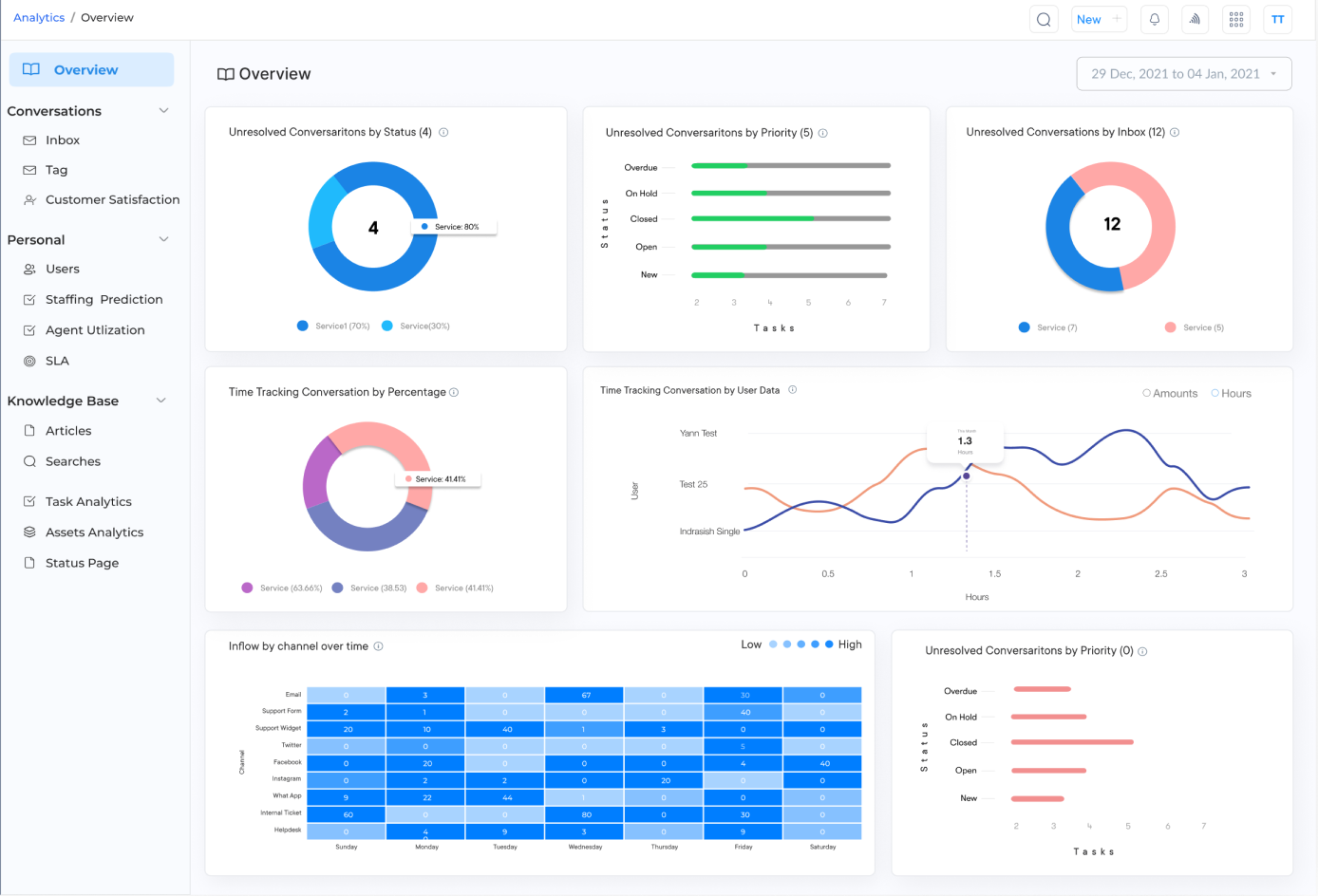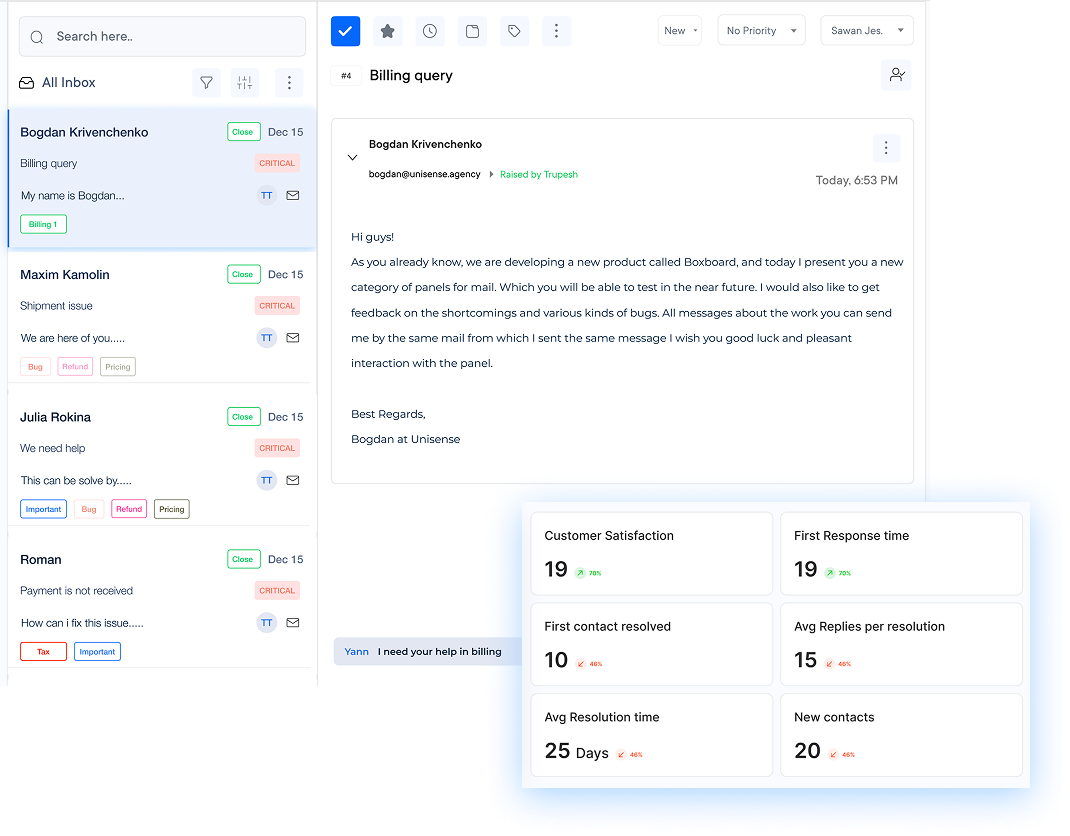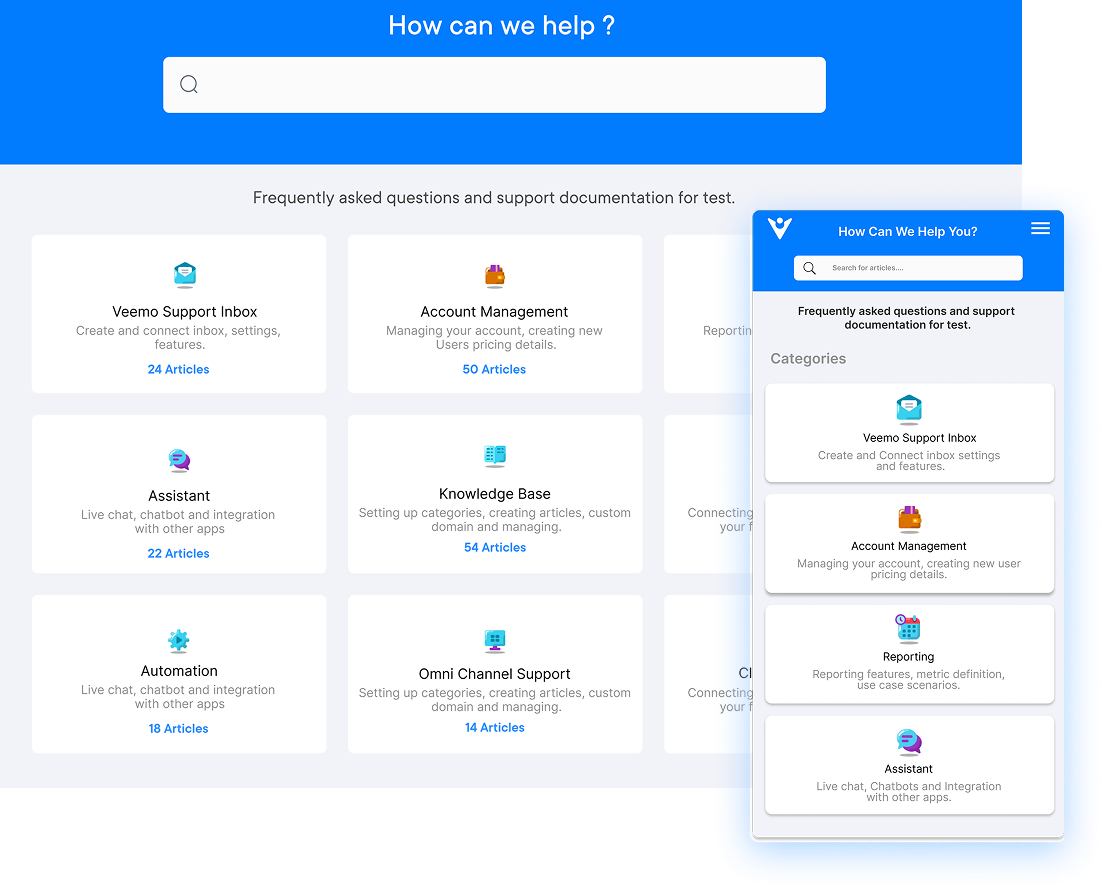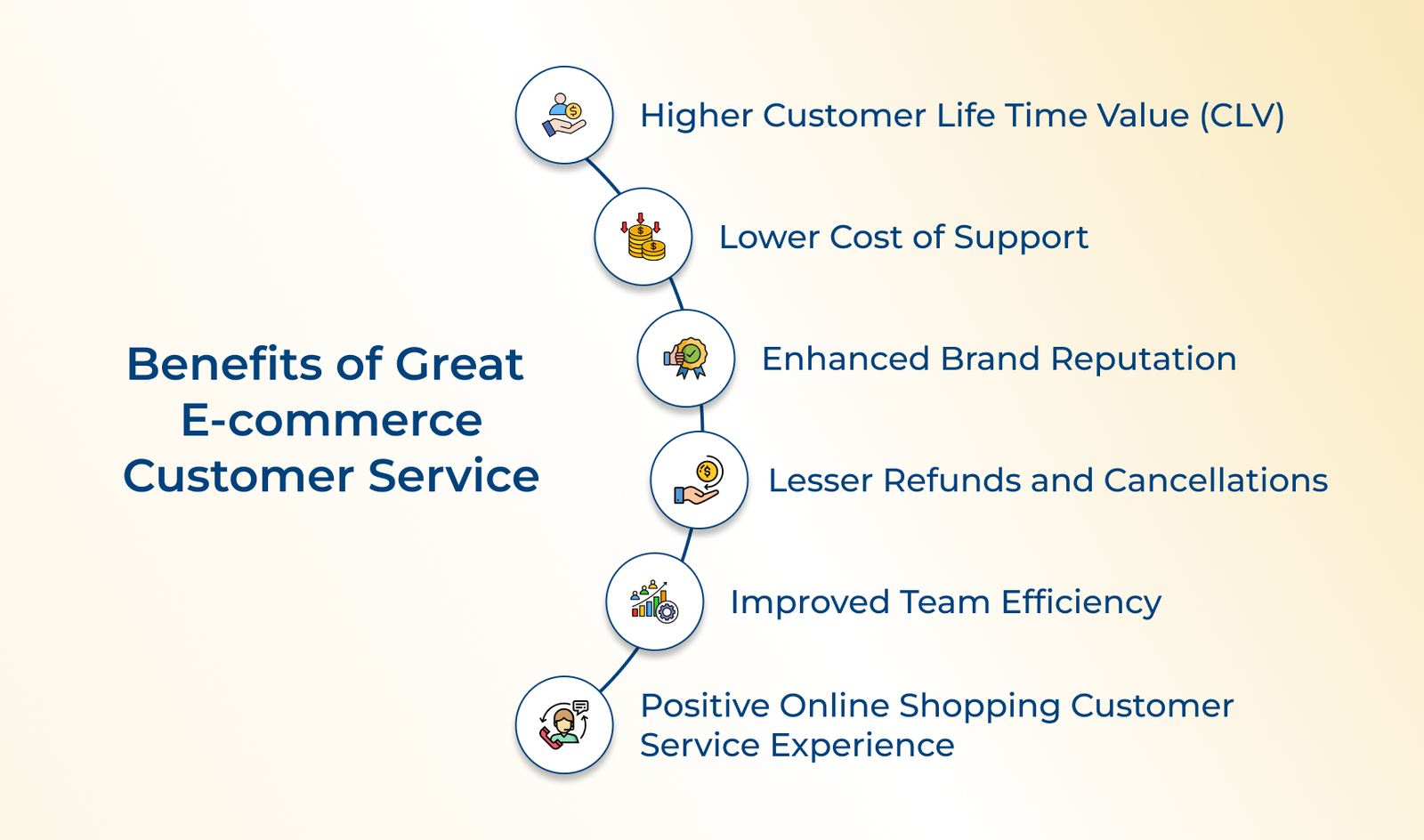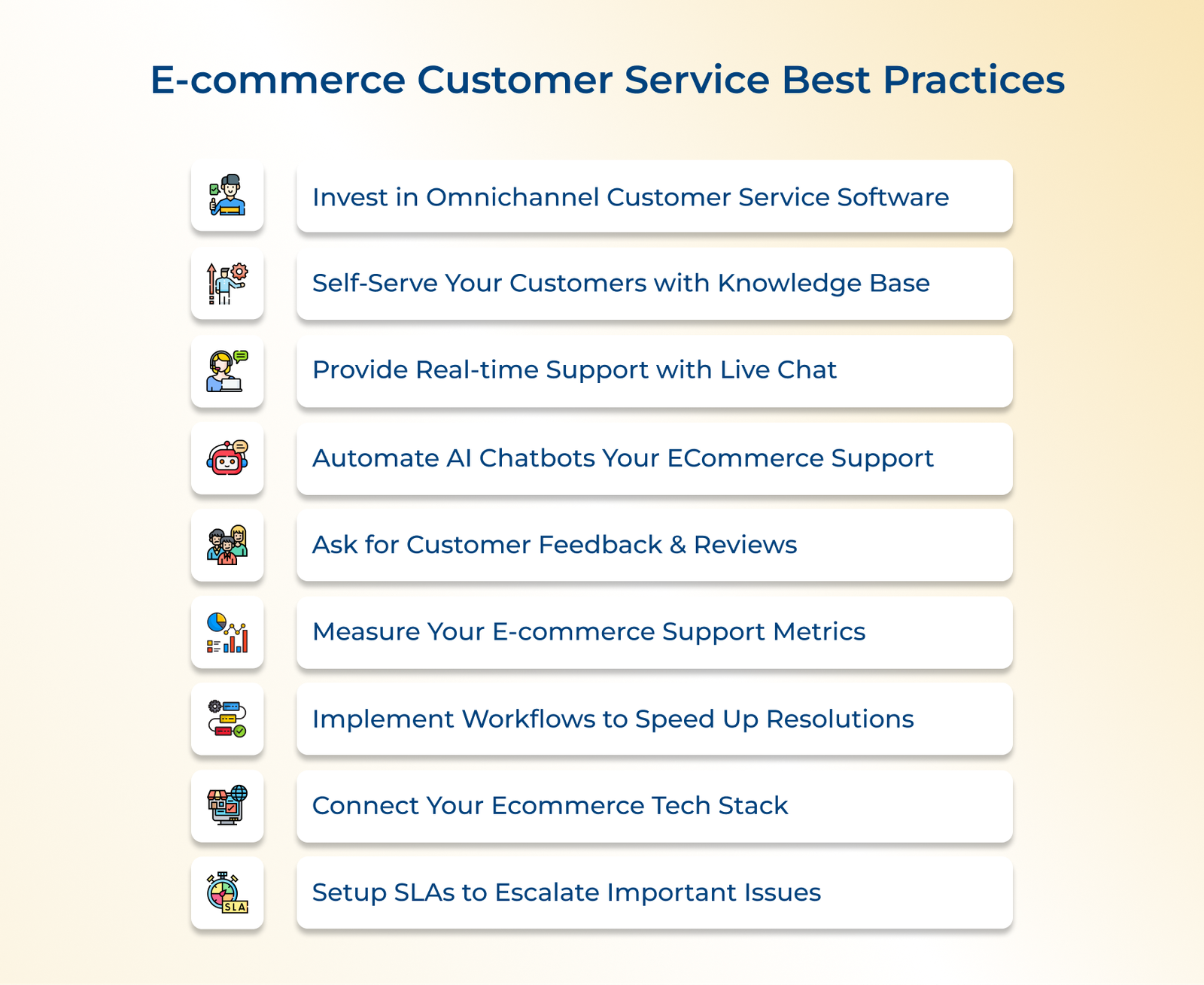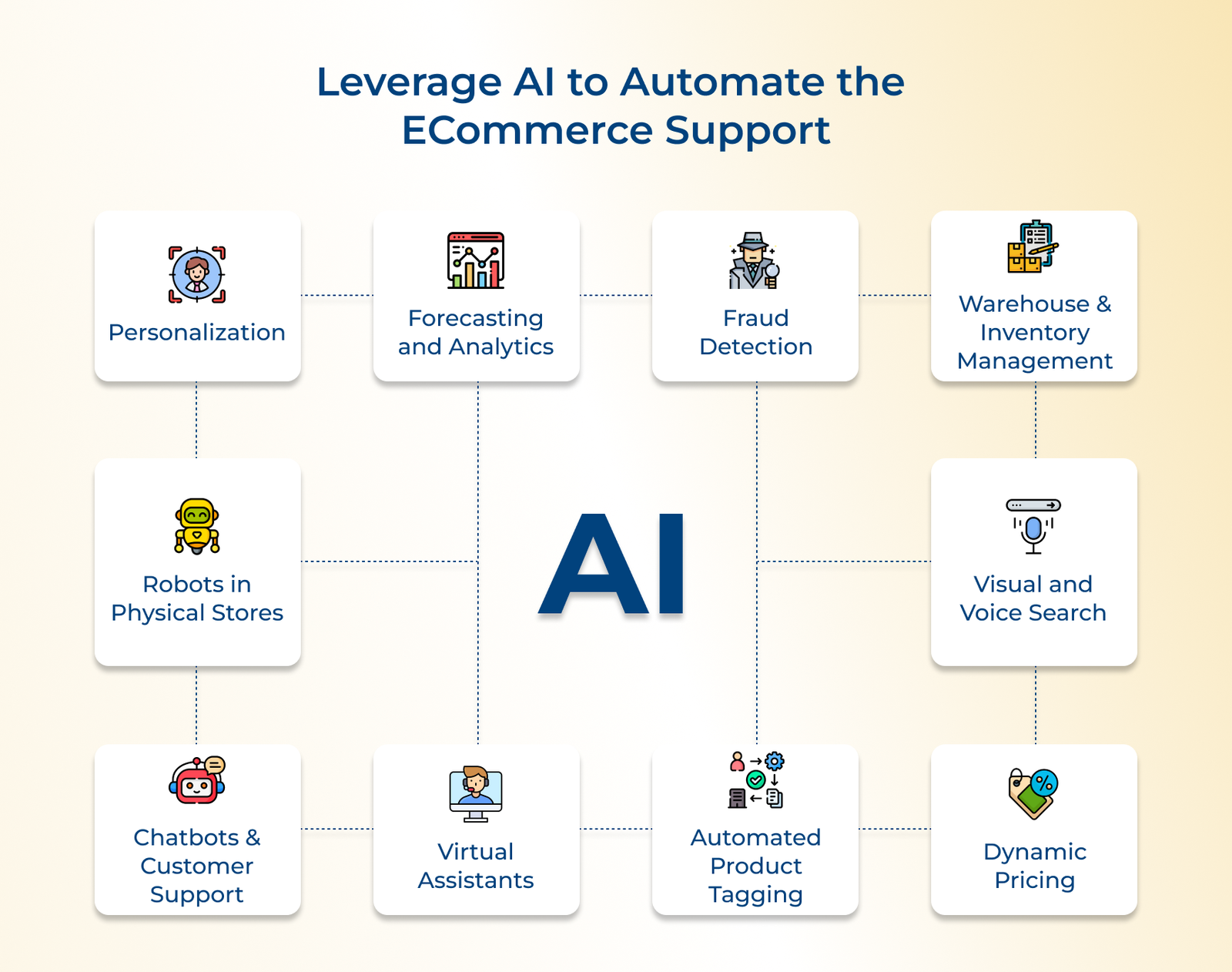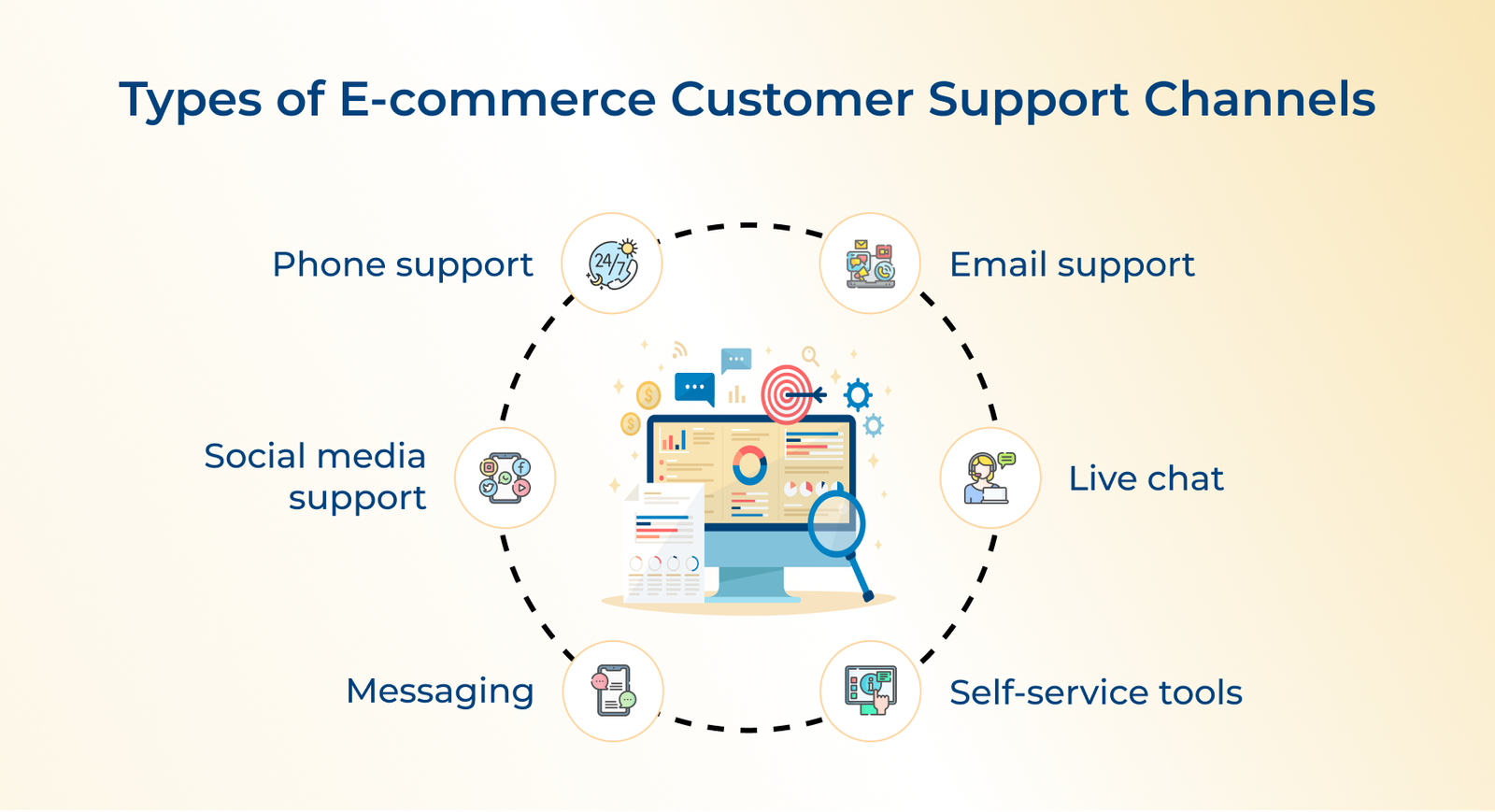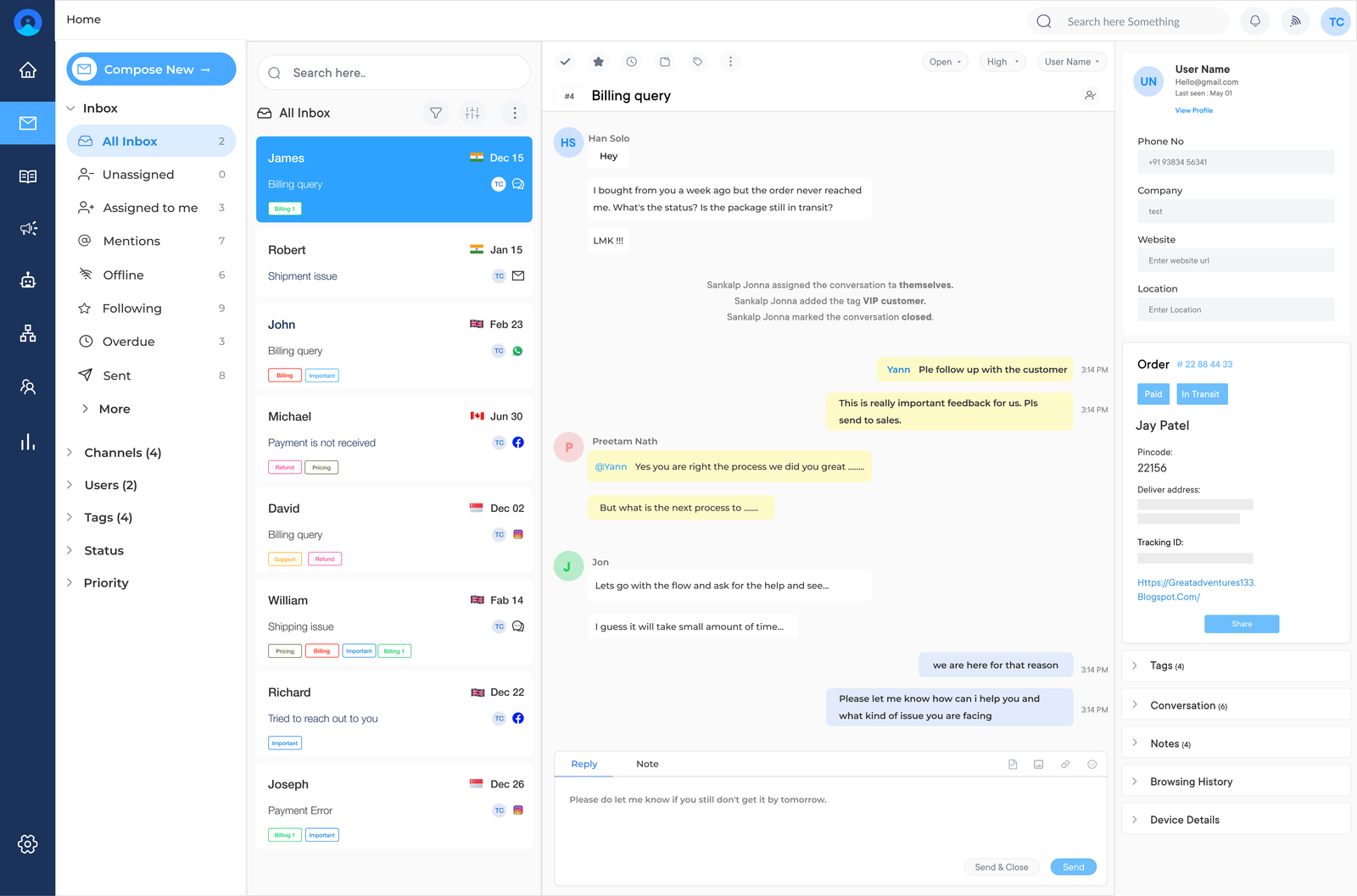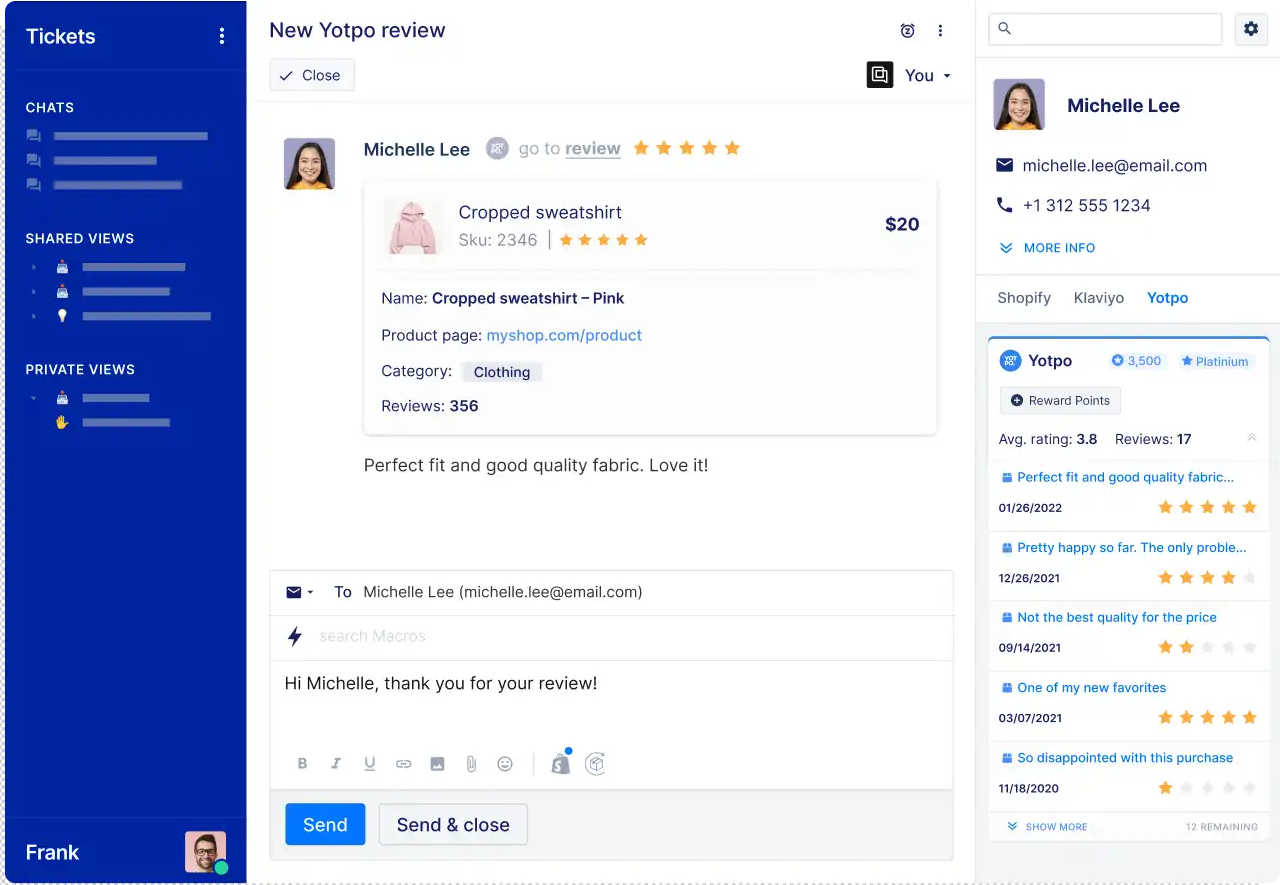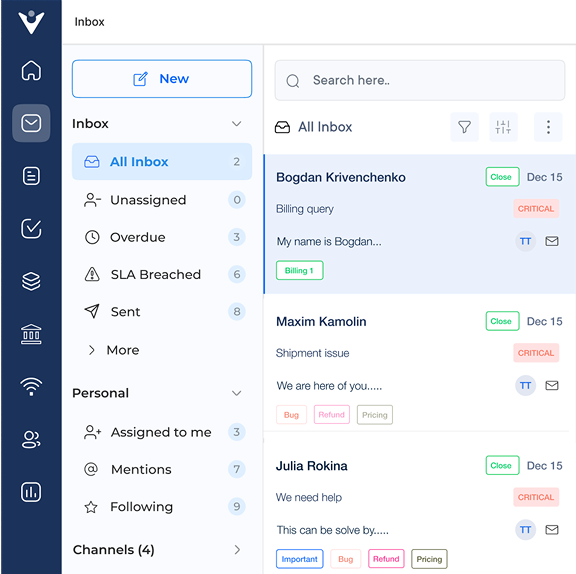1. Invest in an Omnichannel Customer Service Software
Investing in omnichannel customer service software is a vital best practice for e-commerce businesses. Brands can provide a seamless, integrated experience across multiple communication channels such as email, social media, chat and in-app support.
Key features to look for in omnichannel solutions include a unified inbox for all customer interactions and cross-channel communication history. It also offers automated routing and real-time analytics that helps businesses deliver exceptional support.
Key benefits:
- Improved customer experience: Customers can switch between channels without repeating information, leading to higher satisfaction.
- Increased efficiency: Agents can handle multiple channels from a single interface, streamlining operations.
- Better insights: Comprehensive data across all channels enables businesses to identify trends and make informed decisions to enhance service quality.
2. Self-serve Customers with a Knowledge Base
Implementing a knowledge base for customer self-service is a significant e-commerce best practice. Self-service options are important because they empower customers to find answers quickly, reduce support ticket volume and improve customer satisfaction.
An effective knowledge base typically includes FAQs, product guides, troubleshooting articles and a searchable database of common issues.
Pro tips:
- Keep content up-to-date: Regularly review articles to ensure accuracy and relevance.
- Use clear, concise language: Write in a simple, easy-to-understand style to cater to all customers.
- Implement user feedback: Encourage customers to rate articles and provide suggestions for improvement, then act on the feedback.
3. Provide Real-time Support with Live Chat
Providing real-time support through live chat is a crucial ecommerce customer care best practice. Live chat offers several advantages including immediate assistance, increased customer satisfaction and higher conversion rates.
Customers get instant answers while browsing, reducing cart abandonment and facilitating quicker decisions. Training staff for effective live chat support involves developing strong written communication skills.
How to implement:
- Strategically place chat widgets: Position chat options on high-traffic pages and during critical stages of the customer journey.
- Offer 24/7 support: Use a combination of in-house staff and outsourced solutions to provide round-the-clock assistance.
- Integrate with CRM: Connect live chat with customer relationship management system for personalized interactions and better data tracking.
4. Leverage AI to Automate the Ecommerce Support
Artificial intelligence significantly enhances e-commerce customer support by automating various types of queries. Businesses get better at handling repetitive, straightforward inquiries, freeing up human agents for more complex issues.




